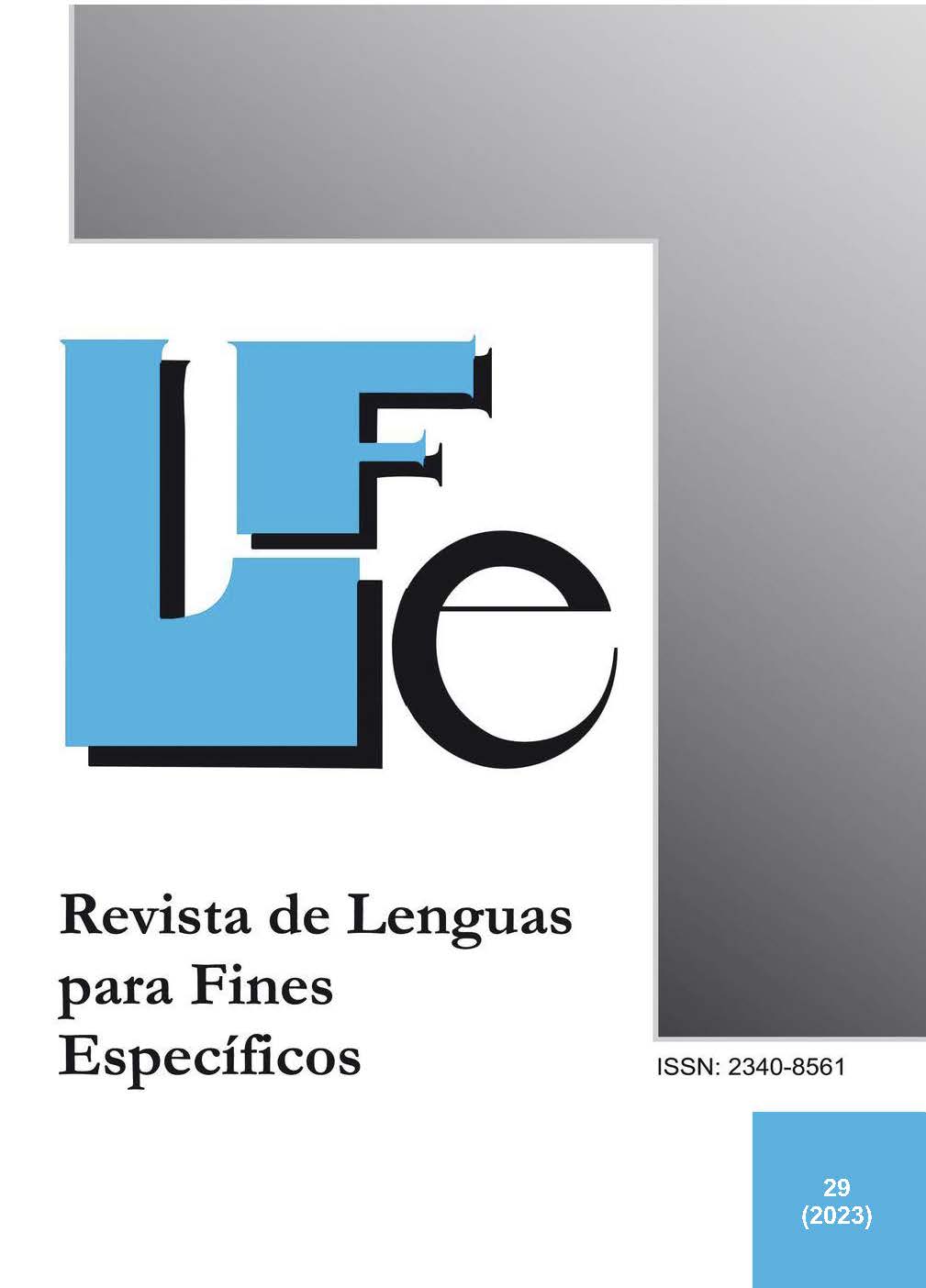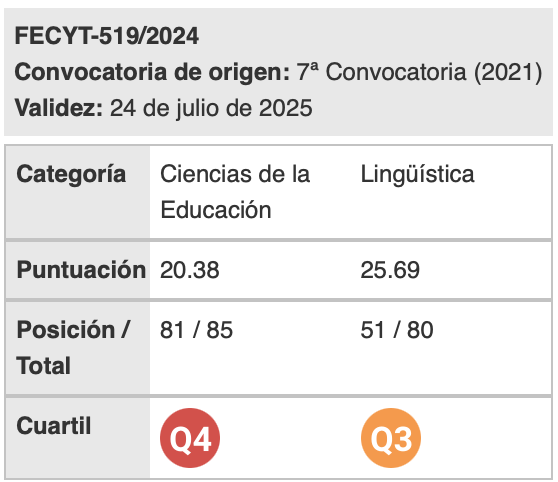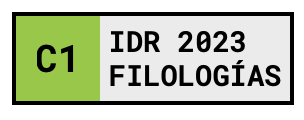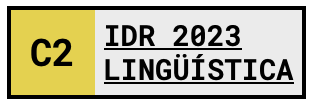Iberian-Romance borrowings into English in the fortified wine industry: Implications for wine educators
Keywords:
Communication in wine industries, Loanwords from Iberian-Romance languages, Models of professional knowledge, Multilingual terminology, Professional discourseAbstract
English tends to be regarded as sufficient for communication in numerous fields. This includes industries whose progress has been reliant on communication in languages other than English, in which English has been useful in matters of trade. A notable example is the microfield of fortified wines, where primary languages include Portuguese (madeira and port) and Spanish (sherry), with English being historically significant, as evident from English documents. With the English corpus showing unassimilated borrowings from the Iberian-Romance languages, and with prestigious wine schools, such as AWRI, the Napa Valley Wine Academy, WSET, to name a few, offering their students little opportunity to learn these languages, it seemed reasonable to provide numerical evidence of the presence of these borrowings in professional communication in English to see if potential comprehension problems among students, resulting from professional discourse being filled with foreign words and expressions may be significant. The (corpus-driven) study of concept systems in the areas of madeira, port and sherry has led to the creation of detailed English-language models containing loanwords from Portuguese and Spanish in varying proportions. The models have been explored to demonstrate to what extent English may be considered as sufficient for (effective) communication in each of the areas of the fortified wine industry, and, by the same token, dependent on borrowings from the industry’s primary languages. The established numbers of loanwords in the descriptions of madeira, port and sherry have indicated the degree to which wine students can rely on their knowledge of English for communication in their target professions while revealing their potential needs for Portuguese and Spanish. These findings inform applied language sciences on the scale of borrowings one could expect in professional discourse of an important sector of the wine industry from the field’s primary languages, with Spanish identified as a relatively more productive source of unassimilated borrowings than Portuguese. The results provide an insight for educational programme developers to consider the inclusion of Portuguese and Spanish classes in professional curricula prepared for students pursuing degrees in winemaking and related fields who have chosen the specialization of fortified wines.
Downloads
References
Algeo, J. (1996). Spanish loanwords in English by 1900. In F. Rodríguez González (Ed.), Spanish Loanwords in the English Language. A Tendency towards a Hegemony Reversal (Topics in English Linguistics, Vol. 18,), 13–40. Berlin & New York: Mouton de Gruyter.
ANSI/NISO Z39.19 (2005). Guidelines for the Construction, Format, and Management of Monolingual Controlled Vocabularies. Bethesda, MD: NISO Press.
Antia, B.E. (2017). Multilingual Terminology and Cognition in Assessment. In R.H. Kaschula, P. Maseko & H.E. Wolff (Eds.), Multilingualism and Intercultural Communication: A South African Perspective, 92–111. Johannesburg: Wits University Press.
AWRI (The Australian Wine Research Institute) (2021). Advanced Viticulture Course. Adelaide, SA: The Australian Wine Research Institute. www.awri.com.au [24.02.2022].
Barkin, F. (1980). The role of loanword assimilation in gender assignment. Bilingual Review / La Revista Bilingüe, Vol. 7, No. 2 (May–August 1980), 105–¬¬112.
Carling, G., Cronhamn, S., Farren, R., Aliyev, E., Frid, J. (2019). The causality of borrowing: Lexical loans in Eurasian languages. PLoS ONE, 14 (10). https://doi.org/10.1371/journal.pone.0223588 [9.01.2023].
Cossart, N. ([1984] 2011). Madeira. The Island Vineyard. Revised 2nd edition. Sonoma, CA: The Rare Wine Co.
Dahlberg, I. (1978). A referent-oriented, analytical concept theory for INTERCONCEPT. International Classification, Vol. 5, No. 3, 142–51.
Dahlberg, I. (1992). Knowledge Organization and Terminology: Philosophical and Linguistic Bases. International Classification, Vol. 19, No. 2, 65–71.
Dahlberg, I. (2011). How to Improve ISKO's Standing: Ten Desiderata for Knowledge Organization. Knowledge Organization, Vol. 38, No. 1, 68–74.
Eberhard, D.M., Simons, G.F., Fennig, C.D. (Eds.) (2021). Ethnologue: Languages of the World. Twenty-fourth edition. Dallas, Texas: SIL International. www.ethnologue.com [2.02.2022].
Gajda, Stanisław (2020). Terminologia a współczesna rzeczywistość naukowa. Poradnik Językowy, Issue 2020, No. 5, 7–17. https://doi.org/10.33896/PorJ.2020.5.1 [20.01.2023].
Gilchrist, A. (Ed.) ([2009] 2018). Information Science in Transition. London: Facet Publishing.
Górnicz, M. (2005a). Łańcuch terminologiczny. In J. Lukszyn (Ed.), Słownik terminologii przedmiotowej, 65. Katedra Języków Specjalistycznych, Uniwersytet Warszawski.
Górnicz, M. (2005b). Status kognitywny terminu. In J. Lukszyn (Ed.), Słownik terminologii przedmiotowej, 109. Katedra Języków Specjalistycznych, Uniwersytet Warszawski.
GRI (The Getty Research Institute) (2017a). Art & Architecture Thesaurus®. Los Angeles, CA: The Getty Research Institute. http://www.getty.edu/research/tools/vocabularies/aat [6.03.2022].
GRI (The Getty Research Institute) (2017b). Getty Thesaurus of Geographic Names®. Los Angeles, CA: The Getty Research Institute. http://www.getty.edu/research/tools/vocabularies/tgn [7.03.2022].
Grucza, F. ([1991] 2017). Terminologia. Jej przedmiot, status i znaczenie. In S. Grucza et al. (Eds.), Franciszek Grucza: Dzieła zebrane, 303–332. Warszawa: Wydawnictwo Naukowe Instytutu Komunikacji Specjalistycznej i Interkulturowej, Uniwersytet Warszawski.
Grucza, F. (2017). Lingwistyka stosowana. Historia – zadania – osiągnięcia. Warszawa: Wydawnictwo Naukowe Instytutu Komunikacji Specjalistycznej i Interkulturowej, Uniwersytet Warszawski.
Grucza, S. (2013). Lingwistyka języków specjalistycznych. Warszawa: Wydawnictwo Naukowe Instytutu Kulturologii i Lingwistyki Antropocentrycznej, Uniwersytet Warszawski.
Grucza, S. (2019). Terminologia (antropocentryczna) – jej przedmiot badań i zadania poznawcze. Applied Linguistics Papers, Vol. 26 No. 3, 1–13.
Halliday, J. & Johnson, H. ([1992] 2013). The Art and Science of Wine. Buffalo, NY: Firefly Books.
Hjørland, B. (2002). Principia Informatica. Foundational Theory of Information and Principles of Information Services. In H. Bruce, R. Fidel, P. Ingwersen, P. Vakkari (Eds.), Emerging Frameworks and Methods. Proceedings of the Fourth International Conference on Conceptions of Library and Information Science (CoLIS4), 109–121. Greenwood Village, CO: Libraries Unlimited.
Hjørland, B. (2009). Concept theory. Journal of the American Society for Information Science and Technology, Vol. 60, Issue 8. August 2009, 1519-1536. https://doi-1org-10000c85i2627.han.buw.uw.edu.pl/10.1002/asi.21082 [12.01.2023].
Hjørland, B. (2011). The importance of theory of knowledge: Indexing and information retrieval as an example. Journal of the American Society for Information Science and Technology, 62 (1), 72-77.
Hjørland, B. (2015). Theories are knowledge organizing systems (KOS). Knowledge Organization 42, No. 2, 113–128.
ISO 25964 (2013). The international standard for thesauri and interoperability with other vocabularies. Geneva: International Organization for Standardization.
Kamadjeu, R. (2019). English: the lingua franca of scientific research. The Lancet, Global Health, Volume 7, Issue 9 (September 2019), e1174.
Lacasta, J., Falquet, G., Zarazaga-Soria, F.J., Nogueras-Iso, J. (2016). An automatic method for reporting the quality of thesauri. Data & Knowledge Engineering, Volume 104, July 2016, 1–14.
Lakoff, G. (1987). Women, Fire, and Dangerous Things. What Categories Reveal about the Mind. Chicago & London: The University of Chicago Press.
Leski, K. (1978). Zasady budowy tezaurusów. Warszawa: OIN PAN.
Losee, R.M. (2007). Decisions in thesaurus construction and use. Information Processing and Management, 43 (2007), 958–968.
Lukszyn, J. (Ed.) (1998). Tezaurus terminologii translatorycznej. Wydawnictwo Naukowe PWN.
Lukszyn, J. (Ed.) (2005). Słownik terminologii przedmiotowej. Katedra Języków Specjalistycznych, Uniwersytet Warszawski.
Lukszyn, J. & Zmarzer, W. (2001). Teoretyczne podstawy terminologii. Warszawa: Katedra Języków Specjalistycznych Uniwersytetu Warszawskiego.
Łukasik, M. (2017). Polska szkoła terminograficzna. In S. Grucza & M. Małachowicz (Eds.), Polskie i europejskie nurty terminologiczne, 26–69. Warszawa: Wydawnictwo Naukowe Instytutu Komunikacji Specjalistycznej i Interkulturowej, Uniwersytet Warszawski.
Małachowicz, M. (2017). Polskie badania terminologiczne. In S. Grucza & M. Małachowicz (Eds.), Polskie i europejskie nurty terminologiczne, 8–25. Warszawa: Wydawnictwo Naukowe Instytutu Komunikacji Specjalistycznej i Interkulturowej, Uniwersytet Warszawski.
Mammen, J. (1994). En realistisk begrebsteori: Om forholdet mellem virksomhedsteorien og den økologiske kognitive psykologi. In Jens Mammen & Mariane Hedegaard (Eds.), Virksomhedsteori i udvikling, 43–58. Århus: Psychological Institute, University of Aarhus.
Mammen, J. (2008). What is a concept? Journal of Anthropological Psychology, 19, 25–27.
Masterman, M., Needham, R., Spärck-Jones, K. (1959). The Analogy between Mechanical Translation and Library Retrieval. Proceedings of the International Conference on Scientific Information, November 1958, Vol. 2, 917–936. Washington, D.C.: National Academy of Sciences.
Mayson, R. ([1999] 2018). Port and the Douro. 4th edition. Oxford: Infinite Ideas.
Mazur, M. (1961). Terminologia techniczna. Warszawa: Wydawnictwa Naukowo-Techniczne.
Medelyan, O., Milne, D., Legg, C., Witten, I.H. (2009). Mining meaning from Wikipedia. Journal of Human–Computer Studies, Vol. 67 (2009), 716–754.
Milošević, I. (2014). The Role of Cognitive Mechanisms and Semantic Motivation in Business English Idioms Acquisition: An experimental study. Journal of Foreign Language Teaching and Applied Linguistics, Fall 2014.
Myers-Scotton, C. (2006). Multiple Voices: an Introduction to Bilingualism. Malden, MA: Blackwell Publishing.
Nagórka, P. (2012). Analiza semantyczna a struktura jednostki informacyjnej. In W. Zmarzer (Ed.), Struktura jednostek informacyjnych, 23–50. Warszawa: IR, WLS, Uniwersytet Warszawski.
Nagórka, P. (2013). Thesaurus of Oenology. Warszawa: Piotr Nagórka / Linguistic Modelling.
Nagórka, P. & Pawłowski, G. (2018). Lingwistyka a terminologia – konflikt czy symbioza? Nowe perspektywy poznawcze dotyczące metodologii obu dyscyplin. In M. Aleksandrzak (Ed.), Języki specjalistyczne w lingwistyce stosowanej: między teorią i praktyką, 11-32. Poznań: Wydawnictwo Naukowe UAM.
Nagórka, P. (2021). Madeira, Port, Sherry: The Equinox Companion to Fortified Wines. Sheffield, UK & Bristol, CT: Equinox Publishing.
Nickerson, C. (2005). English as a lingua franca in international business contexts. English for Specific Purposes, Volume 24, Issue 4 (2005), 367–380.
Nowicki, W. (1979). Metoda pracy nad terminologią wybranej dziedziny. Warszawa: Wydawnictwo Czasopism i Książek Technicznych SIGMA.
Nowicki, W. (1986). Podstawy terminologii. Wrocław: Ossolineum.
Pavel, S. & Nolet, D. (2001). Handbook of Terminology. Adapted into English by Christine Leonhardt. Ottawa: Translation Bureau, Public Works and Government Services Canada.
Pawłowski, G. (2017). Fachlexeme in Konstruktion. Linguistischer Beitrag zur Erkenntnisarbeit. Frankfurt am Main: Peter Lang.
Pawłowski, G. (2021). Metafizyka poznania lingwistycznego. Warszawa: Wydawnictwa Uniwersytetu Warszawskiego.
Poplack, S. (2018). Borrowing: Loanwords in the Speech Community and in the Grammar. New York: Oxford University Press.
Porter, J.H. (2019). Evaluating a thesaurus for discovery of ecological data. Ecological Informatics, Volume 51, May 2019, 151–156.
Rey, A. (1995). Essays on terminology. Translated and edited by J.C. Sager. Amsterdam & Philadelphia: John Benjamins Publishing Company.
Roberts, N. (1984). Historical Studies in Documentation: The Pre-History of Information Retrieval Thesaurus. Journal of Documentation, December 1984, Vol. 40, No. 4, 271–285.
Rodríguez González, F. (1996). Introduction. In F. Rodríguez González (Ed.), Spanish Loanwords in the English Language. A Tendency towards a Hegemony Reversal (Topics in English Linguistics, Vol. 18), 1–12. Berlin & New York: Mouton de Gruyter.
Sibille-de Grimoüard, C. (2014). The Thesaurus for French Local Archives and the Semantic Web. Procedia – Social and Behavioral Sciences, 147 (2014), 206–212.
Sinclair, J. (1991). Corpus, Concordance, Collocation. Oxford, UK: Oxford University Press.
Szabo, J. (2016). Volcanic Wines: Salt, Grit and Power. London: Jacqui Small.
Temmerman, R. (1997). Questioning the Univocity Ideal. The Difference Between Socio-Cognitive Terminology and Traditional Terminology. Hermes, Journal of Linguistics, No. 18, 51–90. https://tidsskrift.dk/her/article/view/25412/22333 [12.02.2023].
Tognini-Bonelli, E. (2001). Corpus Linguistics at Work. Amsterdam & Philadelphia: John Benjamins Publishing Company.
Trowbridge, B. (2016). History’s Unparalleled Alliance: the Anglo-Portuguese Treaty of Windsor, 9th May 1386. History of government, 9 May 2016. https://history.blog.gov.uk [21.02.2022].
Vizetelly, H. (1876). Facts about sherry. London: Ward, Lock and Tyler.
Vizetelly, H. (1880). Facts about Port and Madeira: With Notices of the Wines Vintaged Around Lisbon, and the Wines of Tenerife. London: Ward, Lock and Co.
USDA (United States Department of Agriculture) (2022). National Agricultural Library Thesaurus (20th edition). Washington, DC: United States Department of Agriculture. agclass.nal.usda.gov [27.02.2022].
WSET (Wine & Spirit Education Trust) (2017). WSET® Level 3 Award in Wines. Specification. London: Wine & Spirit Education Trust. www.wsetglobal.com [17.02.2022].
WSET (Wine & Spirit Education Trust) (2019). WSET® Level 2 Award in Wines. Specification. London: Wine & Spirit Education Trust. www.wsetglobal.com [17.02.2022].
WSET (Wine & Spirit Education Trust) (2020). WSET® Level 4 Diploma in Wines. Specification. London: Wine & Spirit Education Trust. www.wsetglobal.com [24.02.2022)].
WSET (Wine & Spirit Education Trust) (2021). WSET® Level 1 Award in Wines. Specification. London: Wine & Spirit Education Trust. www.wsetglobal.com [24.02.2022].
WSET (Wine & Spirit Education Trust) (2022). How to say it. London: Wine & Spirit Education Trust. www.wsetglobal.com [24.02.2022].
WSG (Wine Scholar Guild) (2021). Certified Sherry Wine Specialist (CSWS). Washington, DC: Wine Scholar Guild. www.winescholarguild.org [26.12.2021)].
WSG (Wine Scholar Guild) (2022). Path for SWE Students. Washington, DC: Wine Scholar Guild. www.winescholarguild.org [26.12.2022].
Zeng, Marcia Lei (2008). Knowledge Organization Systems. Knowledge Organization Vol. 35, Nos. 2-3, 160–82.
Zeng, Marcia Lei (2019). Interoperability. Knowledge Organization, Vol. 46, No. 2, 122–46. www.isko.org/cyclo/interoperability [11.01.2023].
Downloads
Published
How to Cite
Issue
Section
License
Authors who publish with this journal agree to the following terms:
- Authors retain copyright and grant the journal right of first publication with the work simultaneously licensed under a Creative Commons Attribution License that allows others to share the work with an acknowledgement of the work's authorship and initial publication in this journal.
- Authors are able to enter into separate, additional contractual arrangements for the non-exclusive distribution of the journal's published version of the work (e.g., post it to an institutional repository or publish it in a book), with an acknowledgement of its initial publication in this journal.
- Authors are permitted and encouraged to post their work online (e.g., in institutional repositories or on their website) prior to and during the submission process, as it can lead to productive exchanges, as well as earlier and greater citation of published work (See The Effect of Open Access).

Revista de Lenguas para fines específicos is licensed under a Creative Commons Reconocimiento-NoComercial-SinObraDerivada 4.0 Internacional License.

























